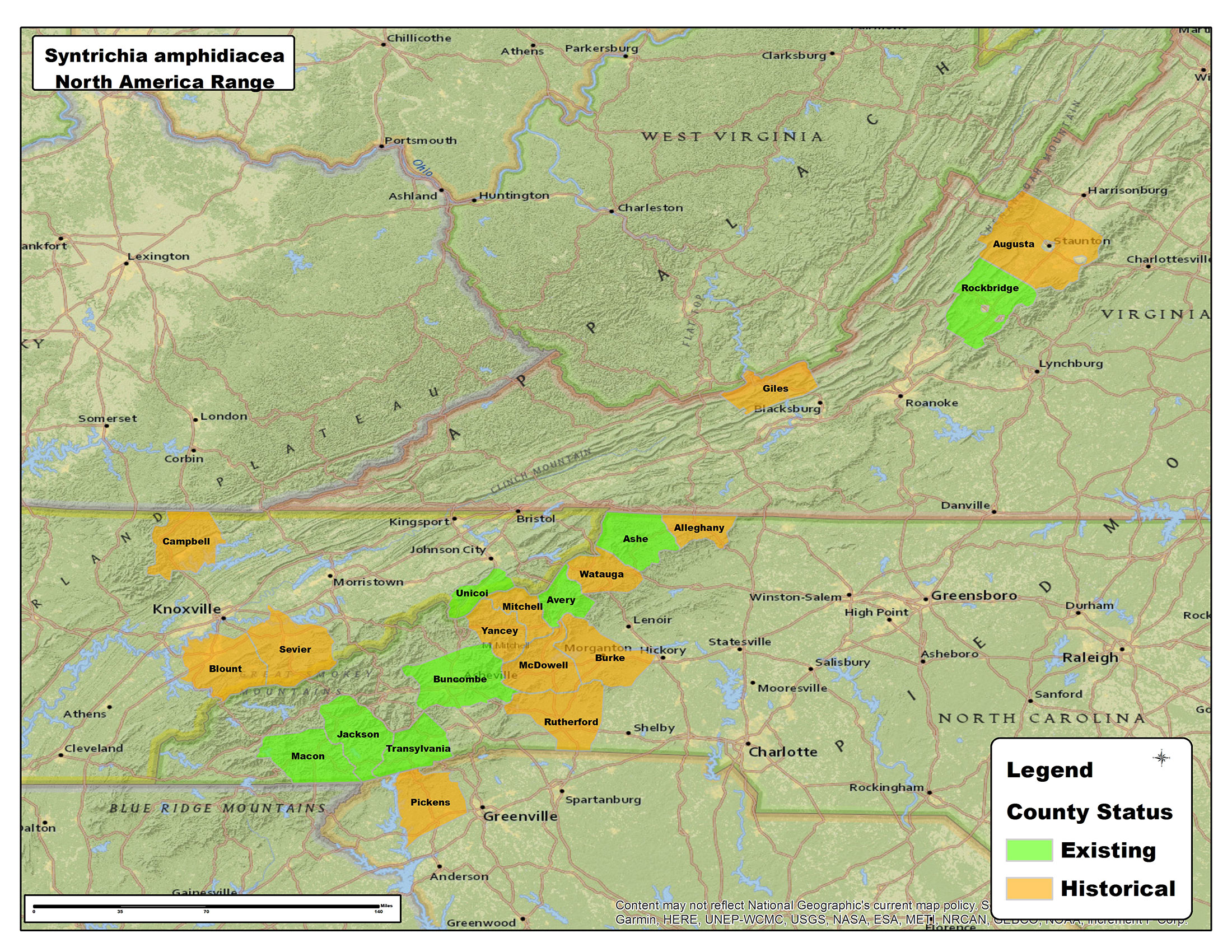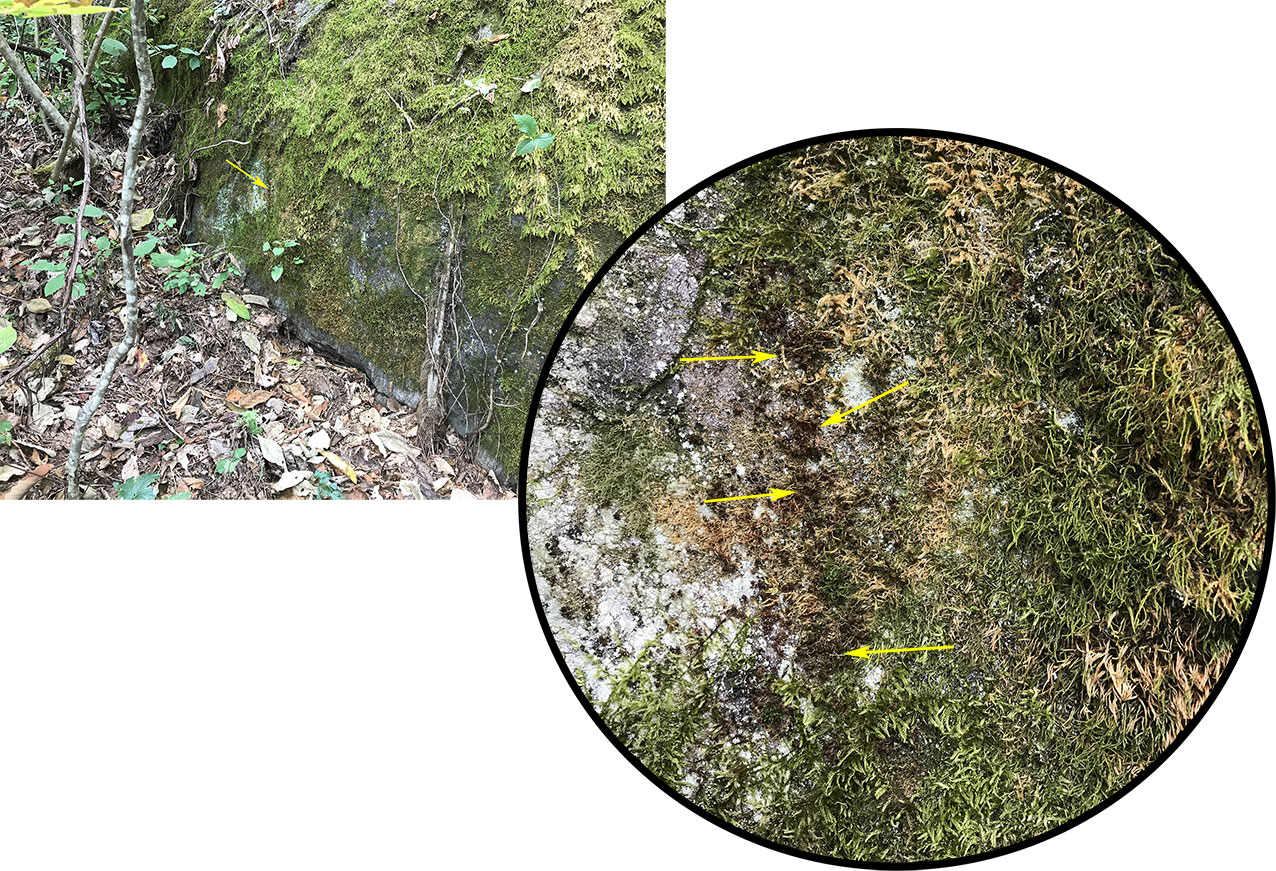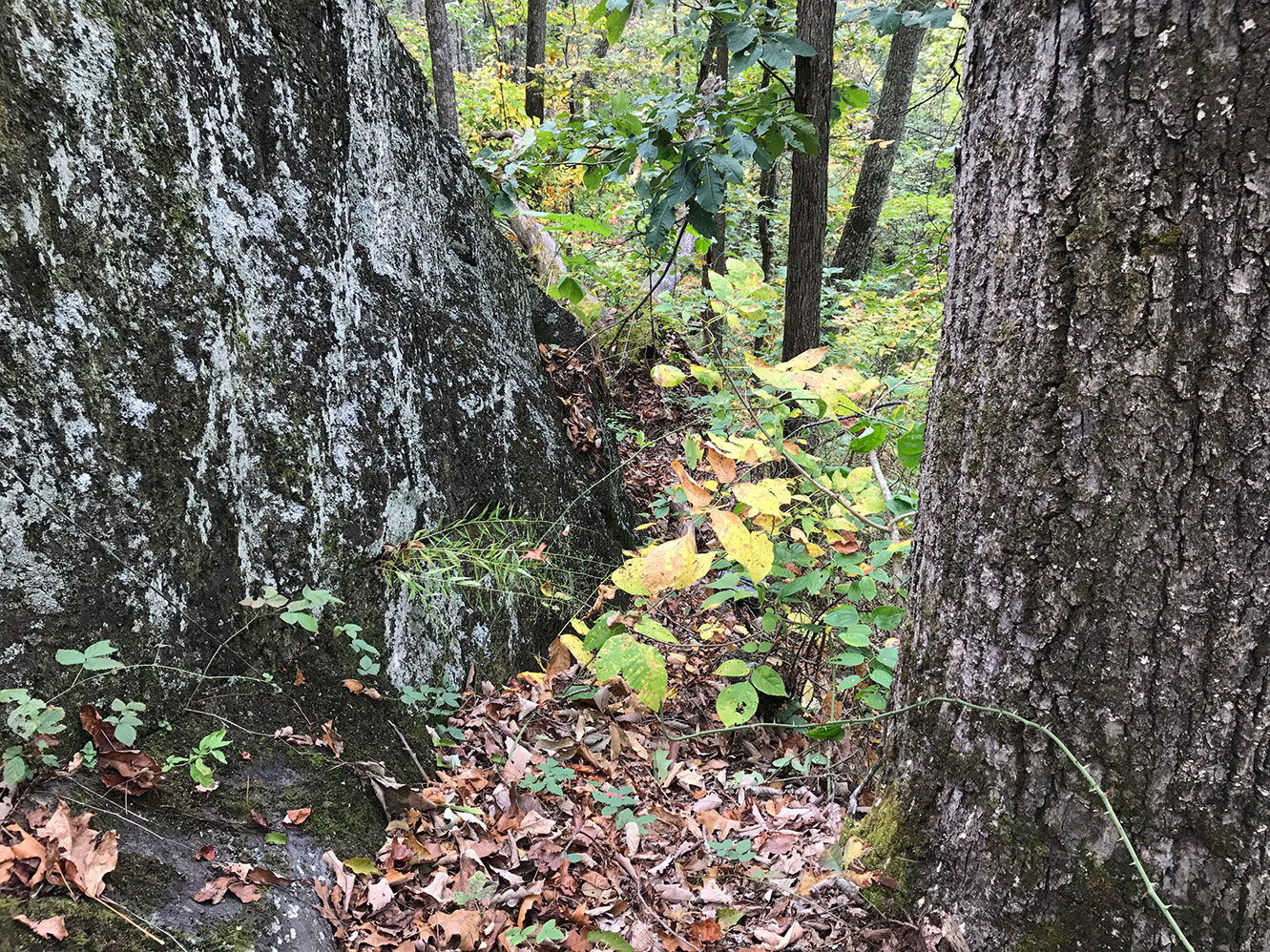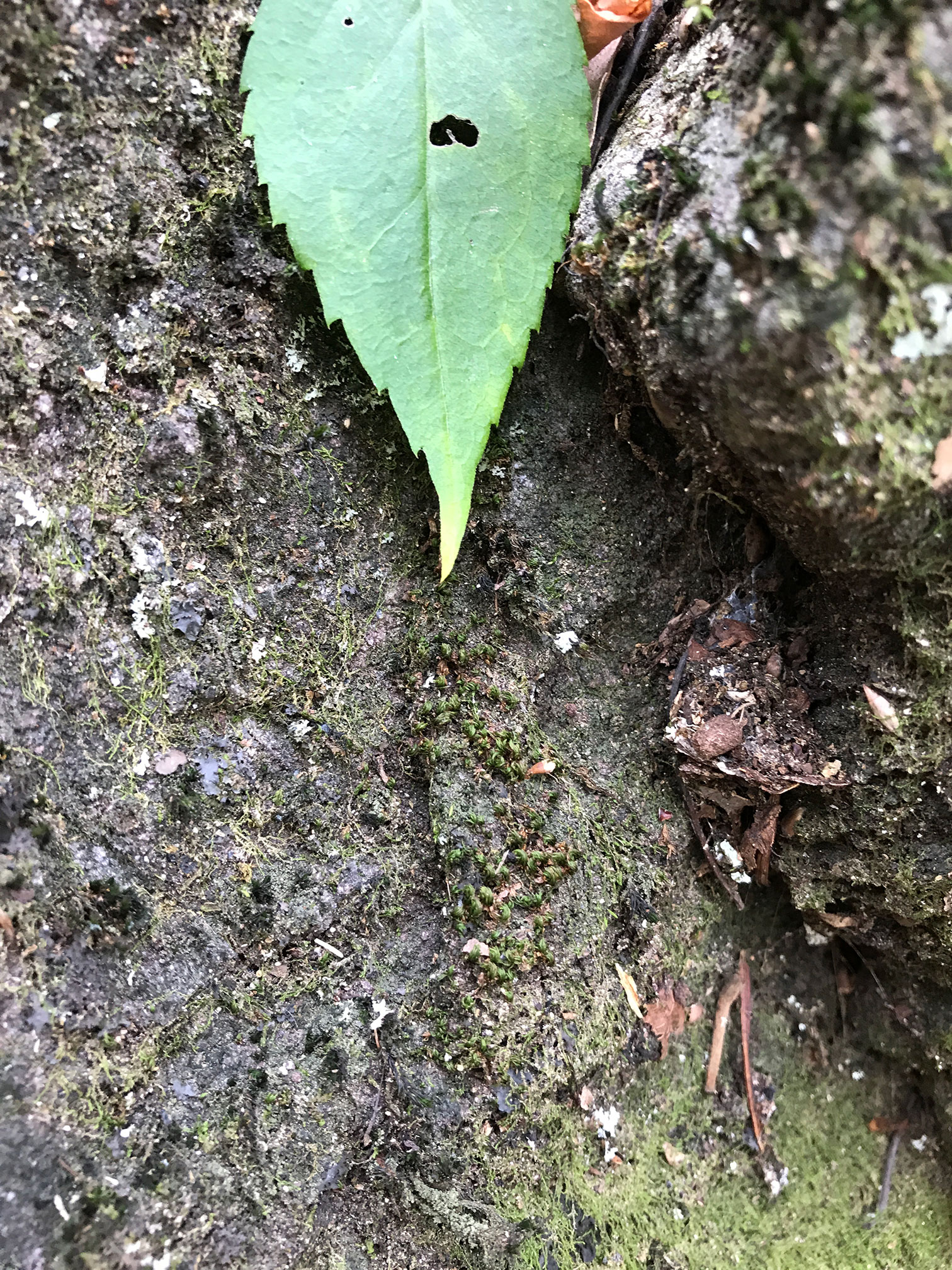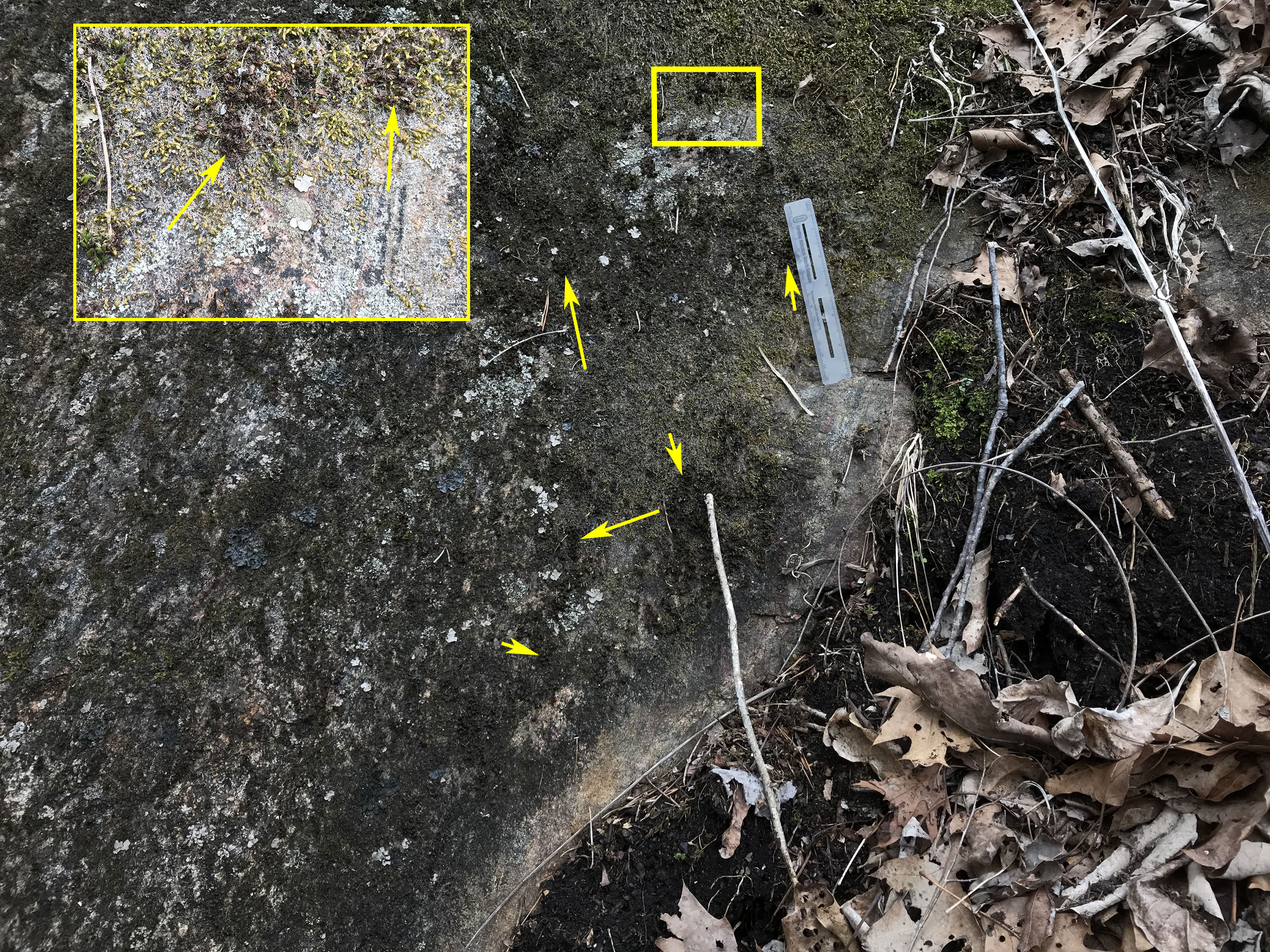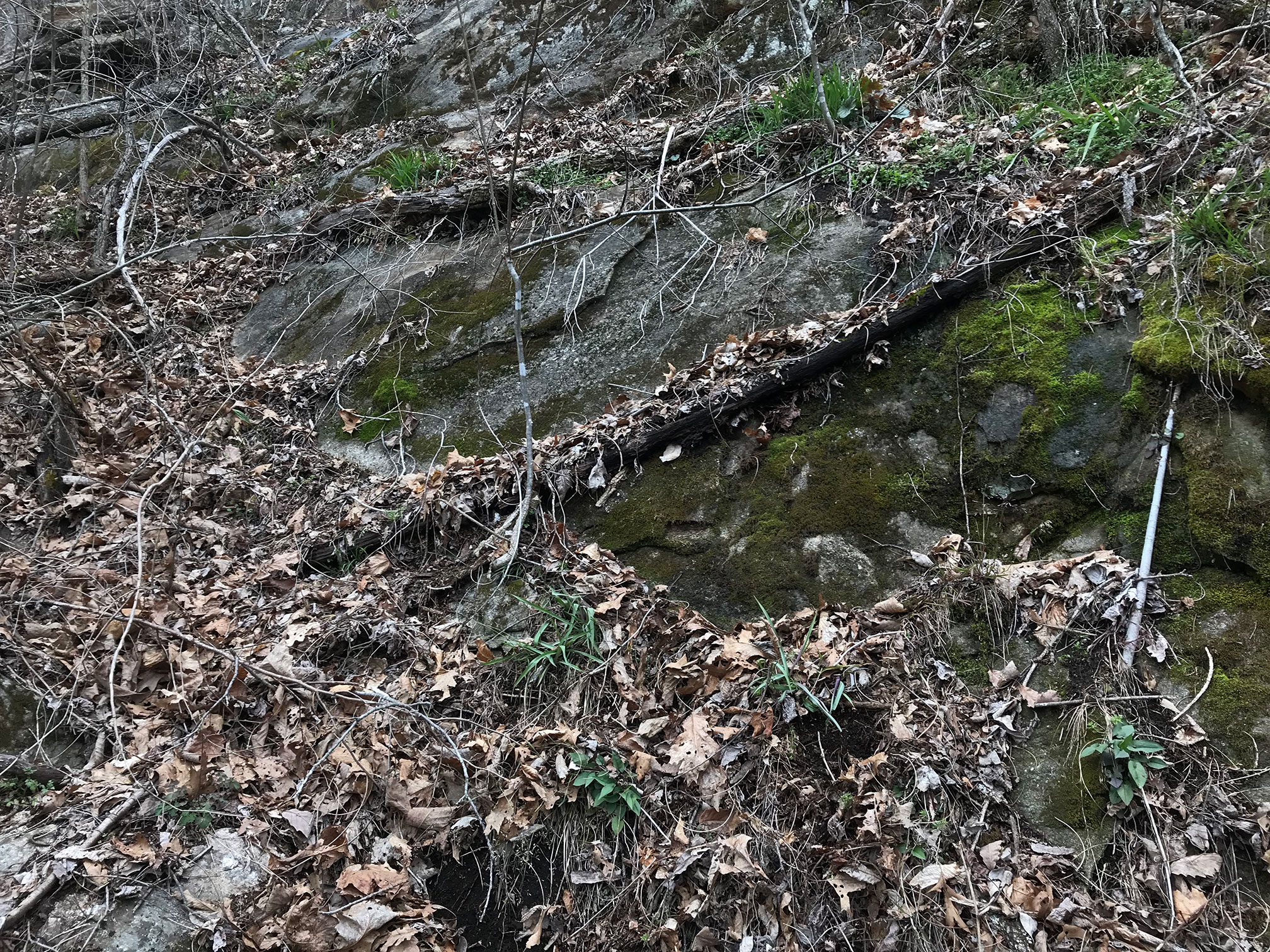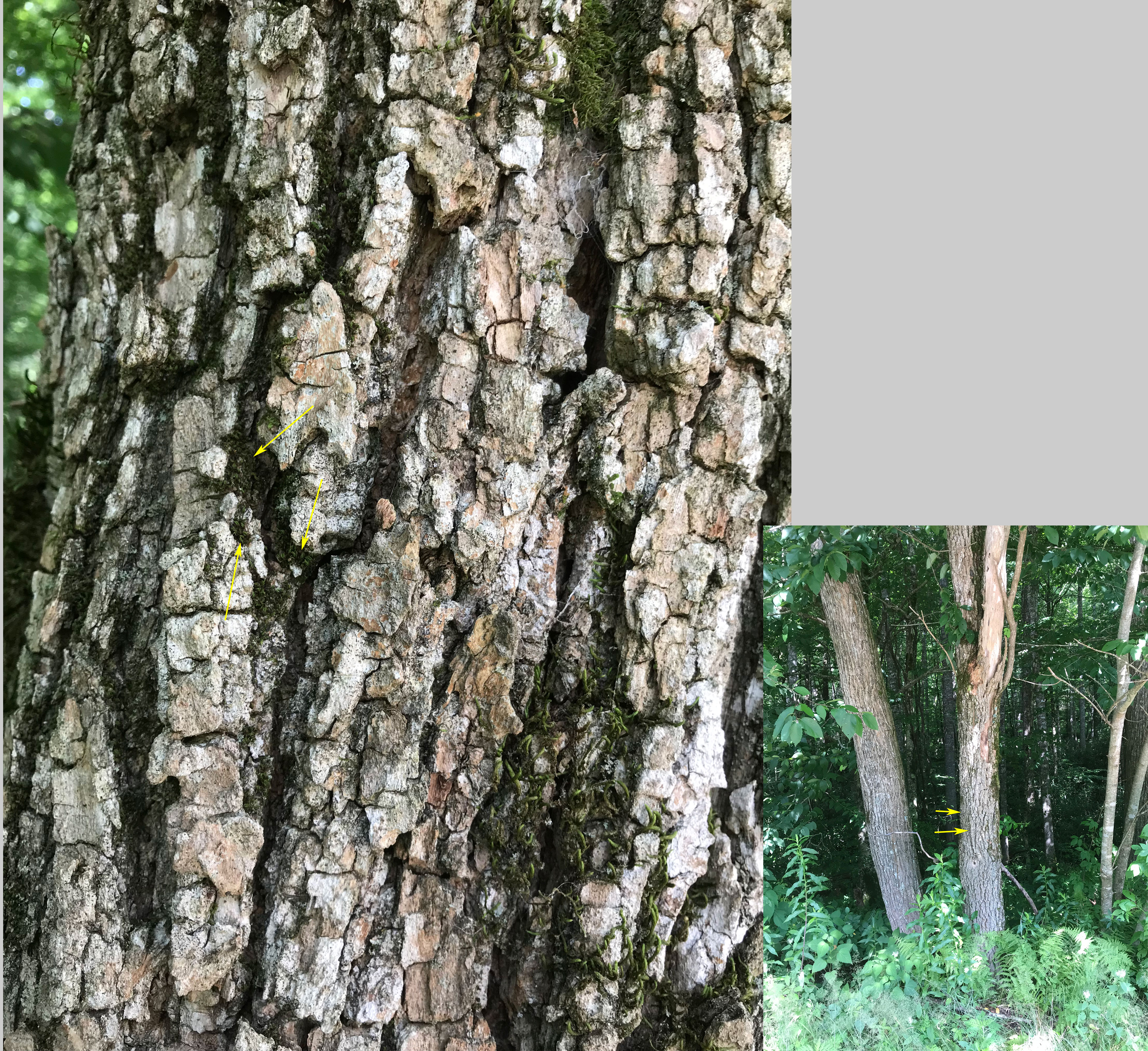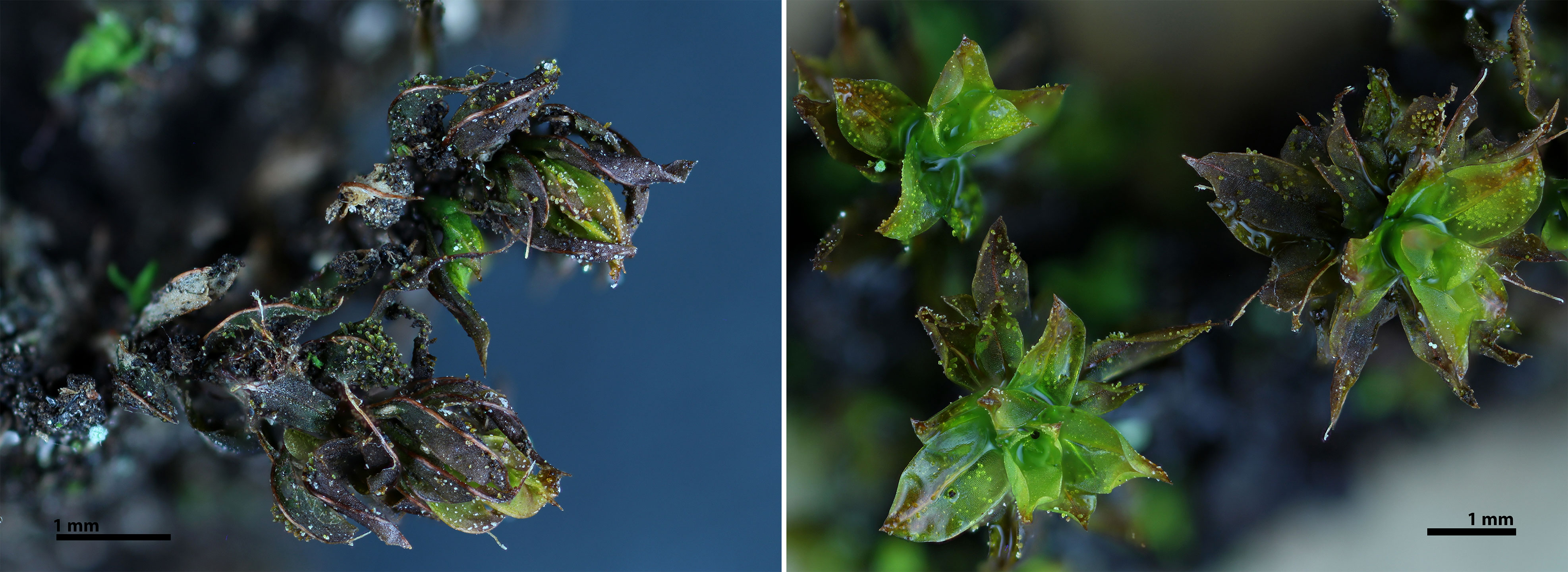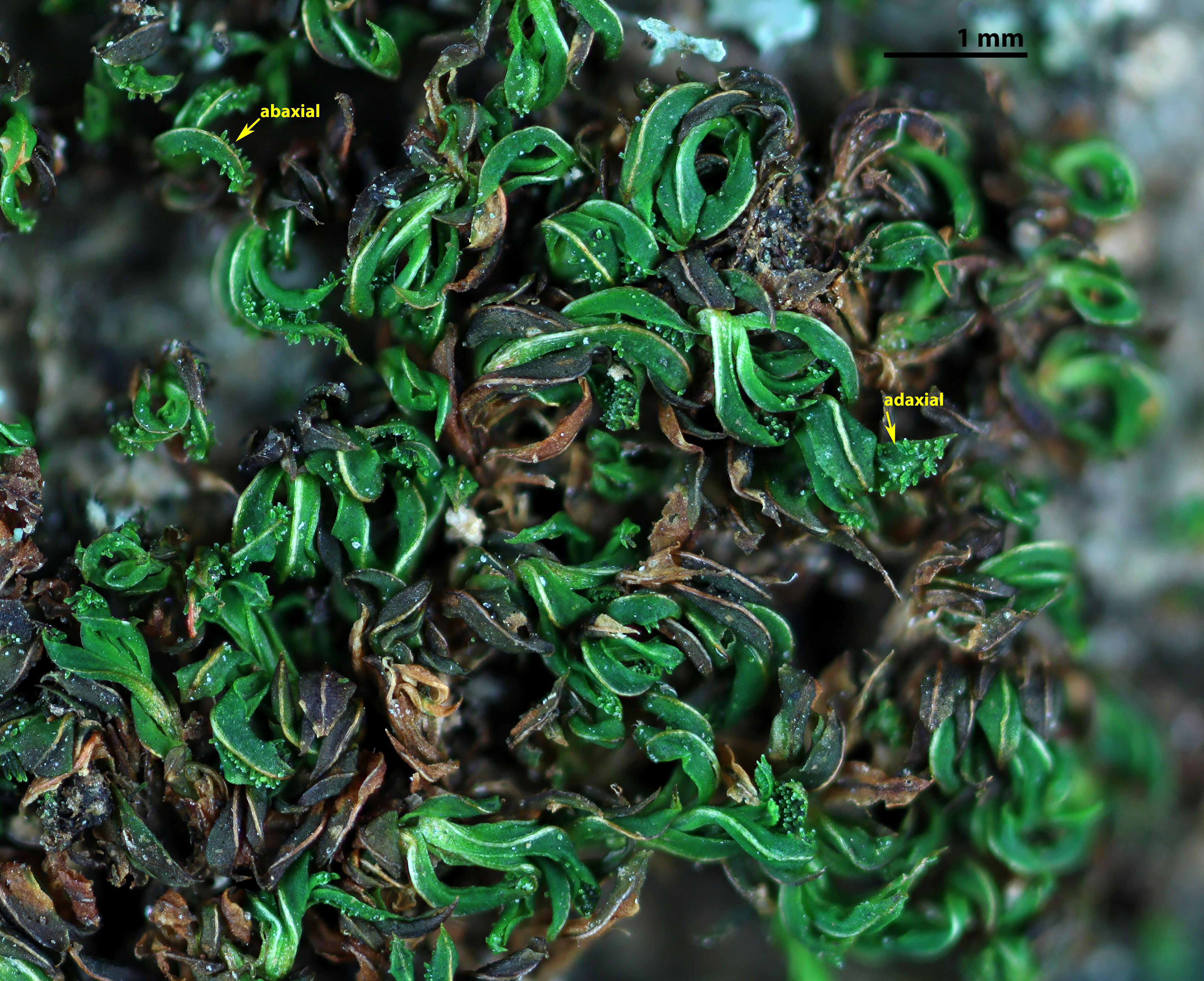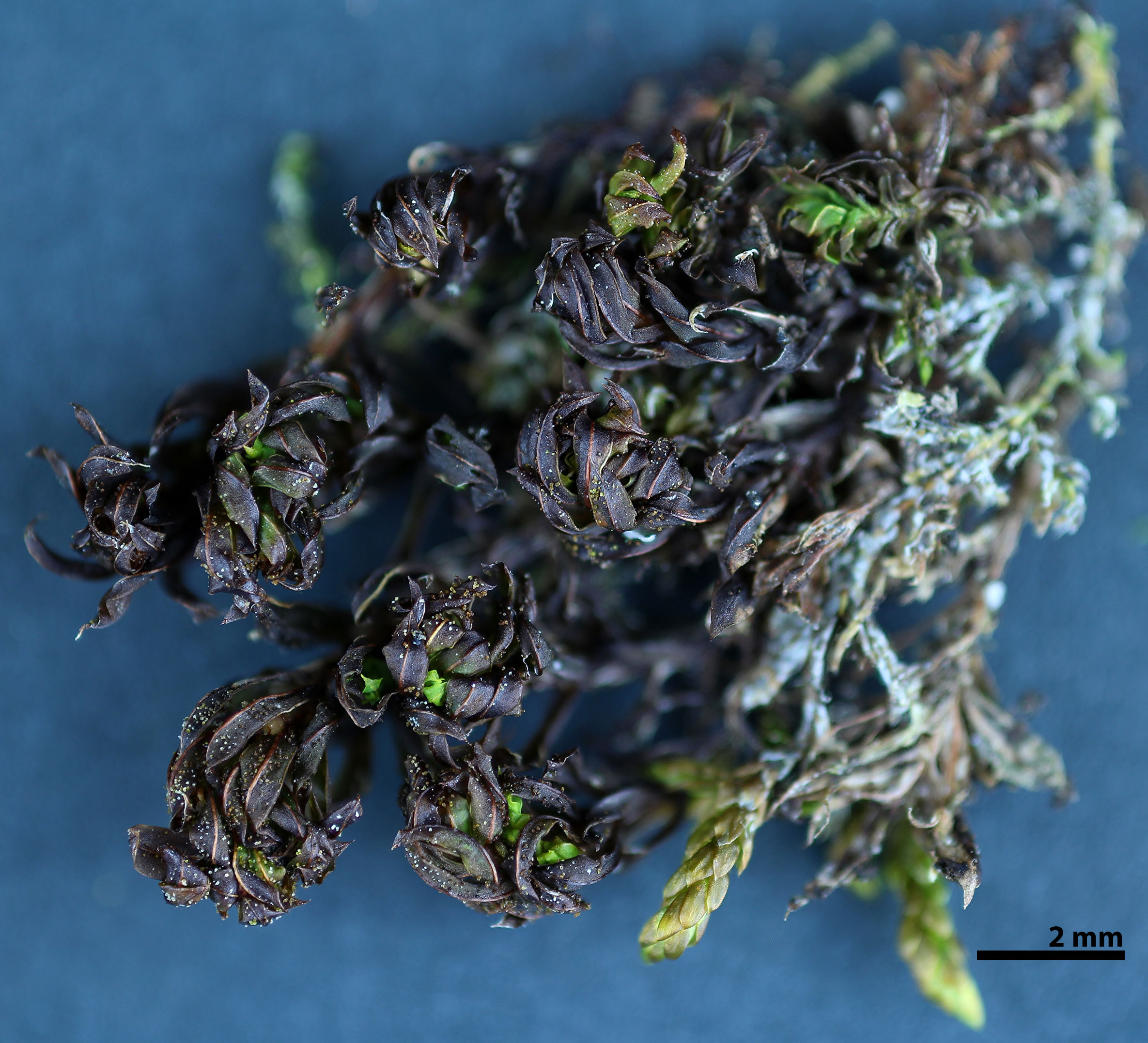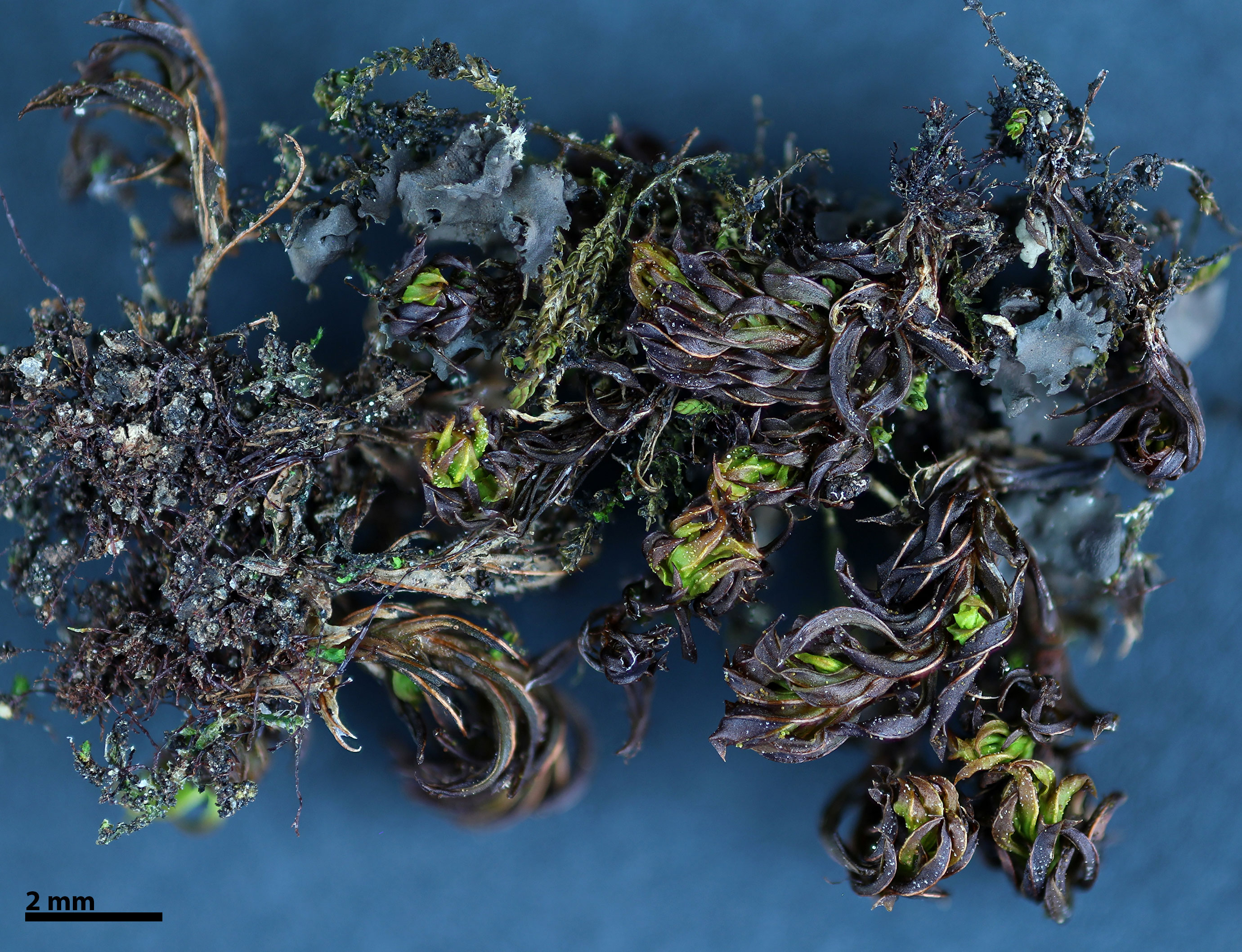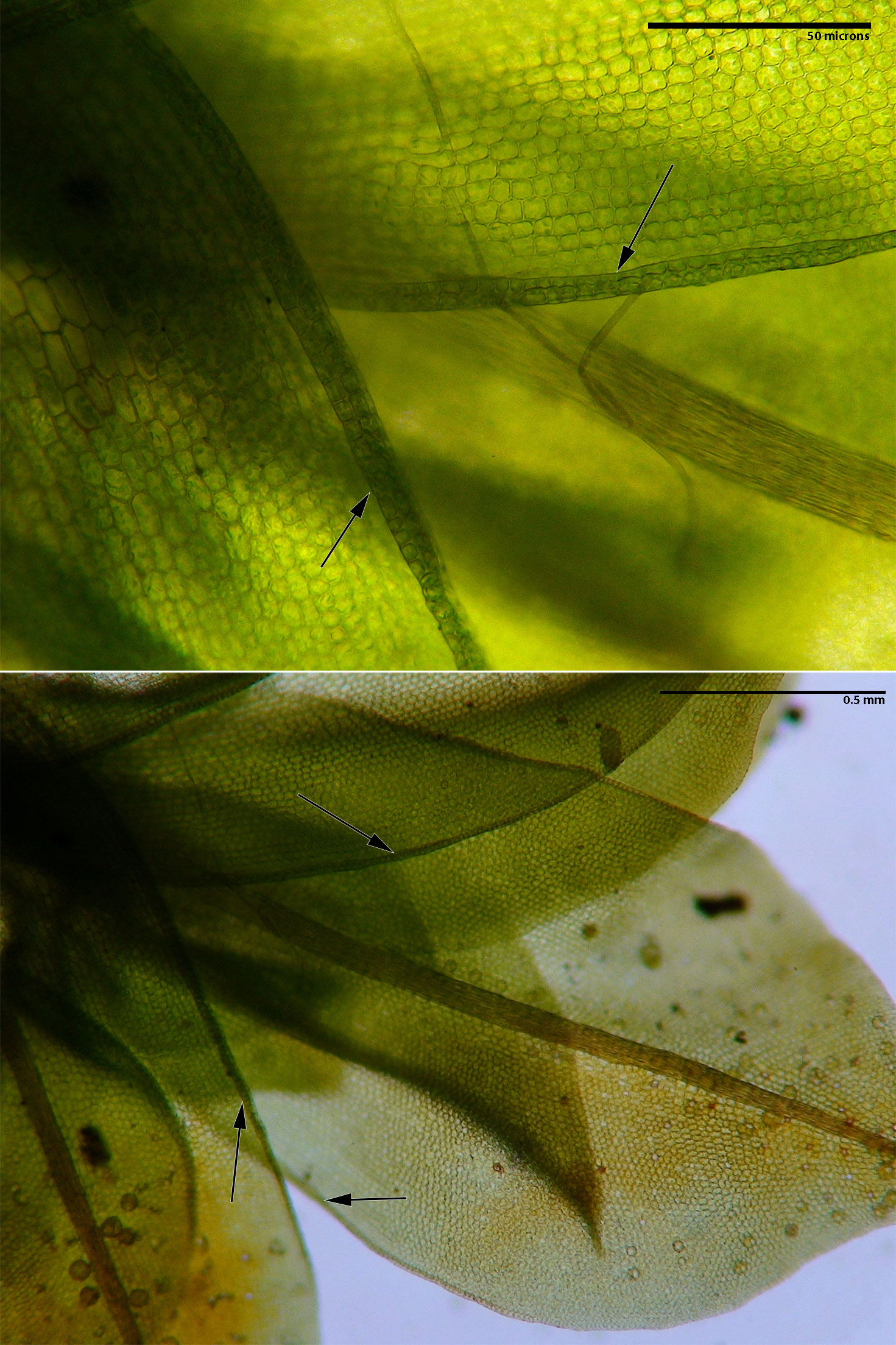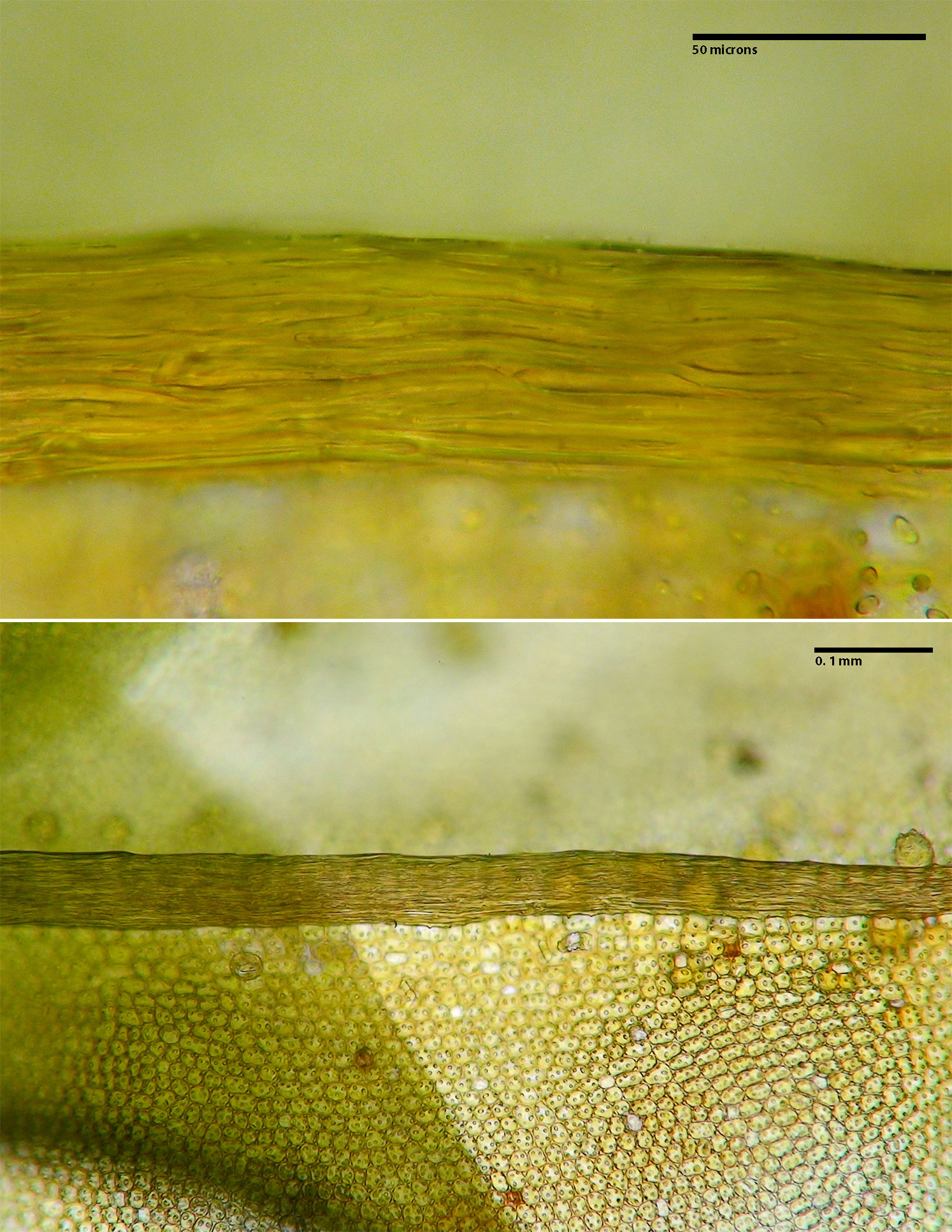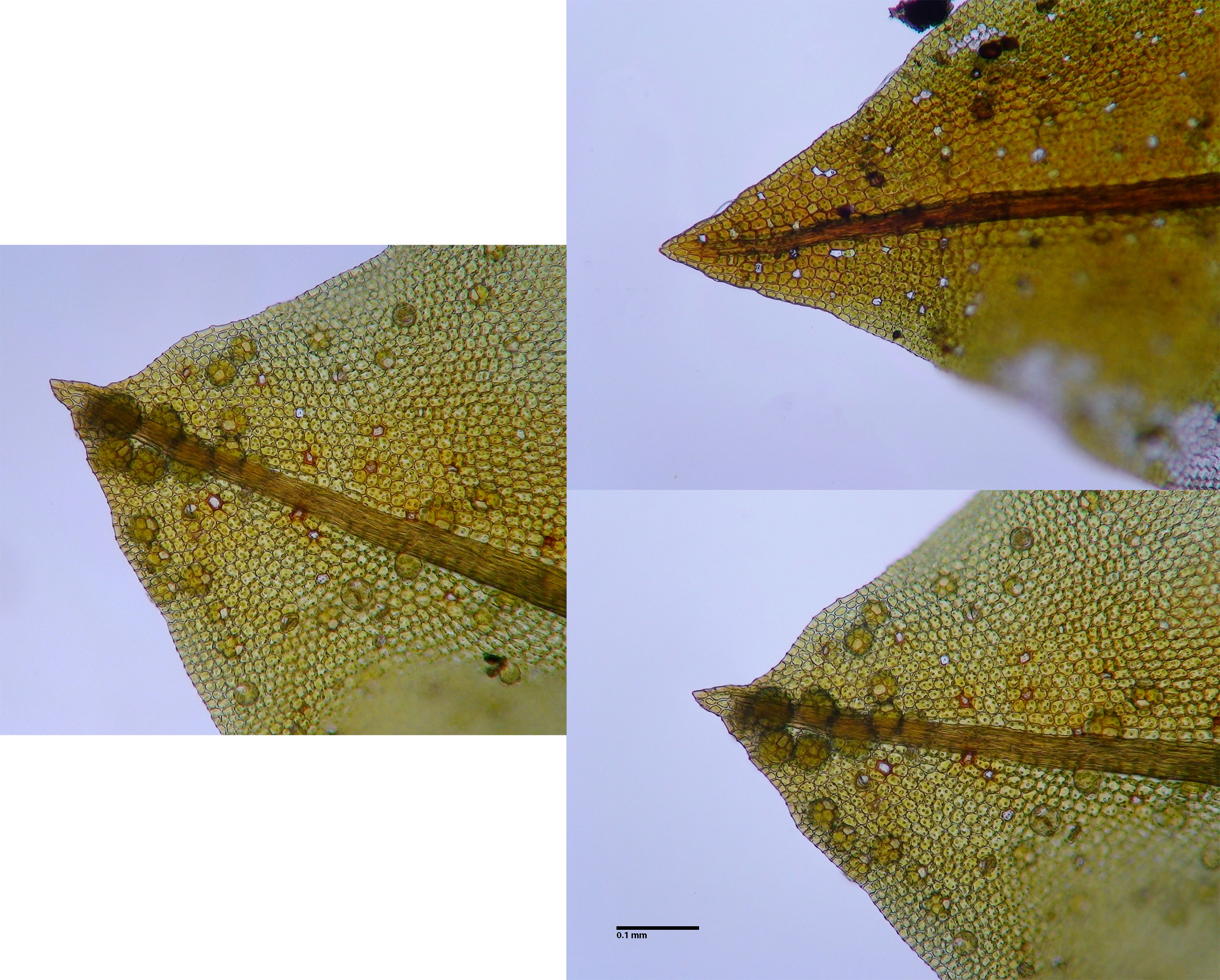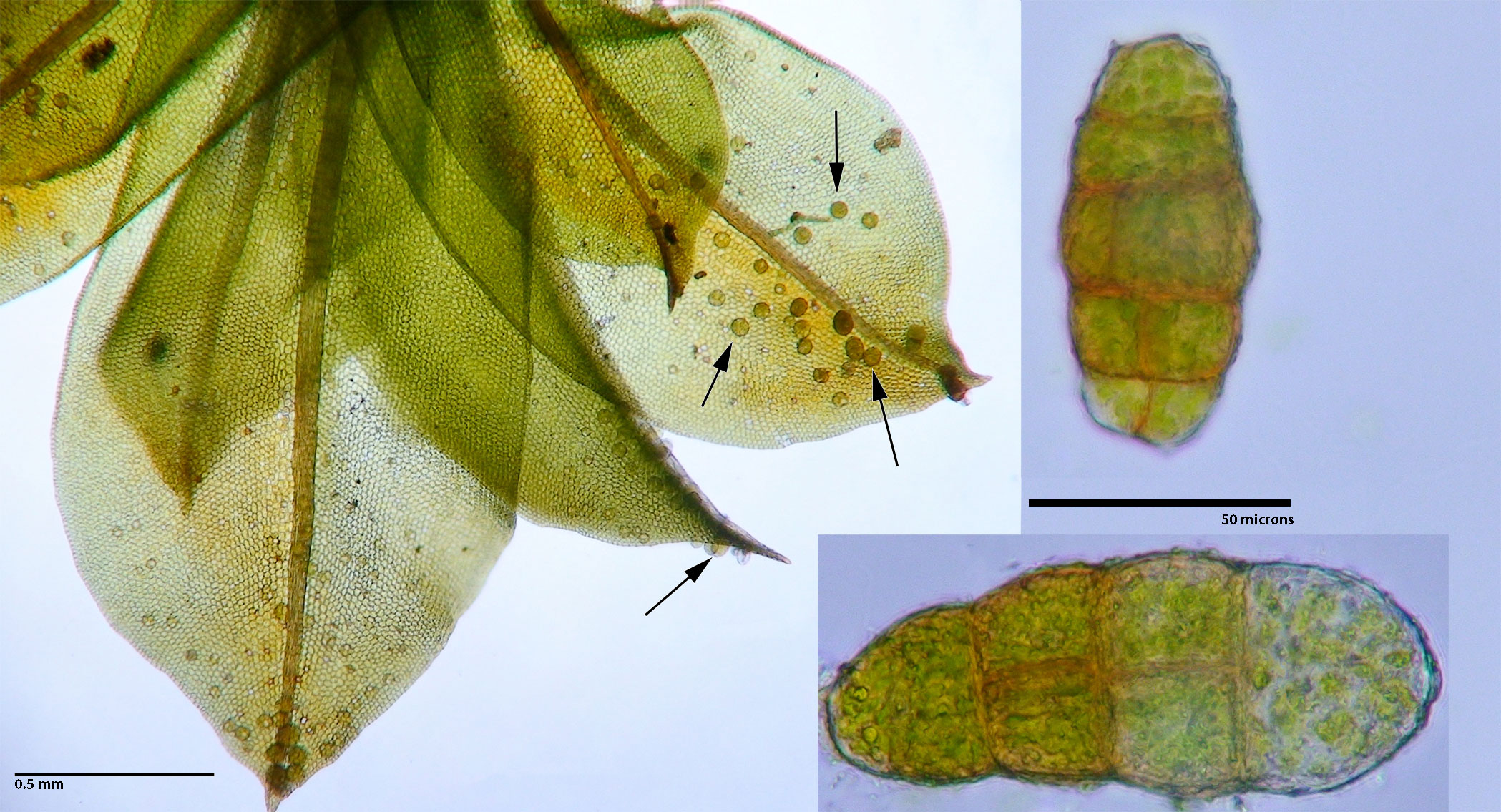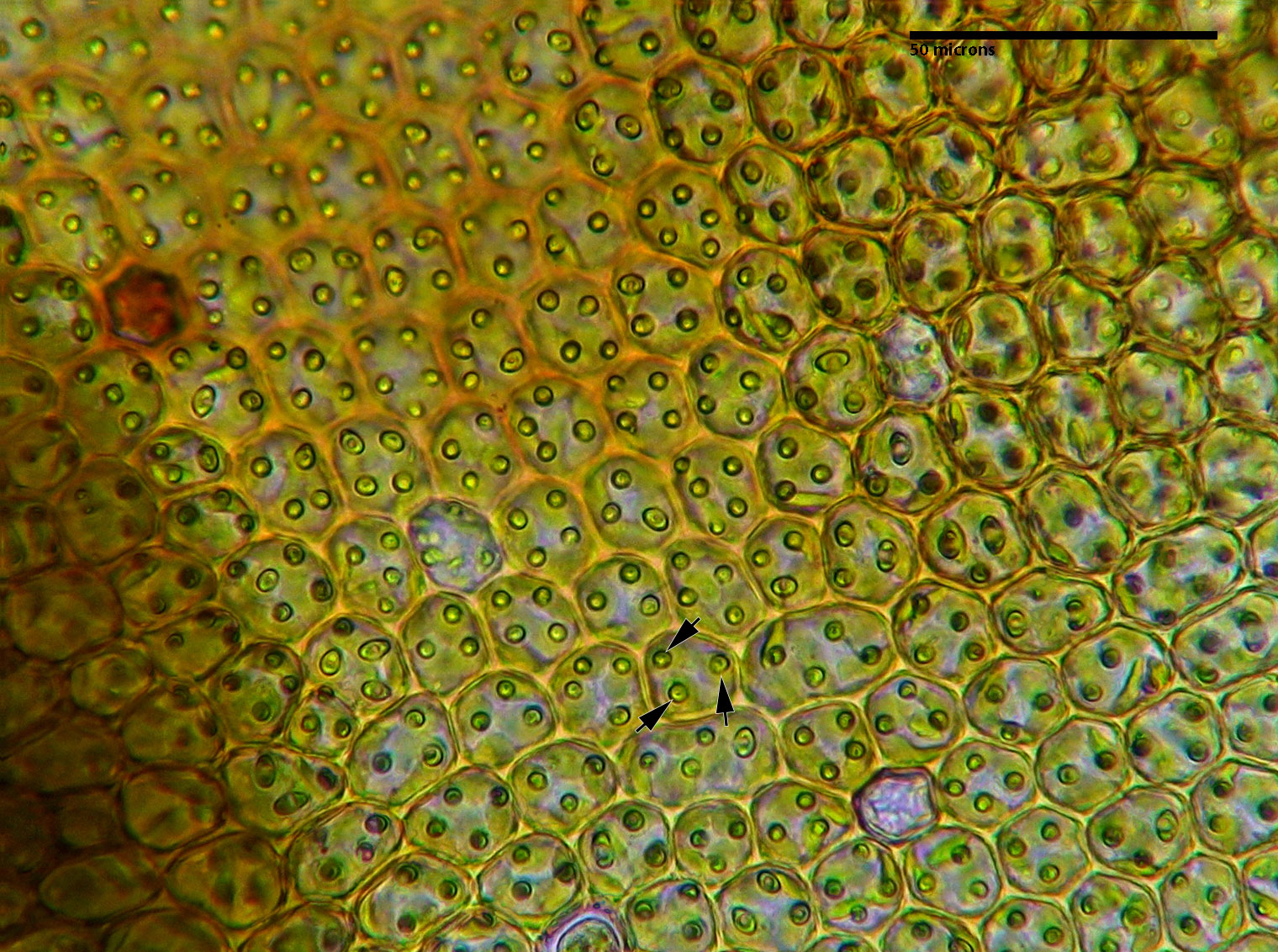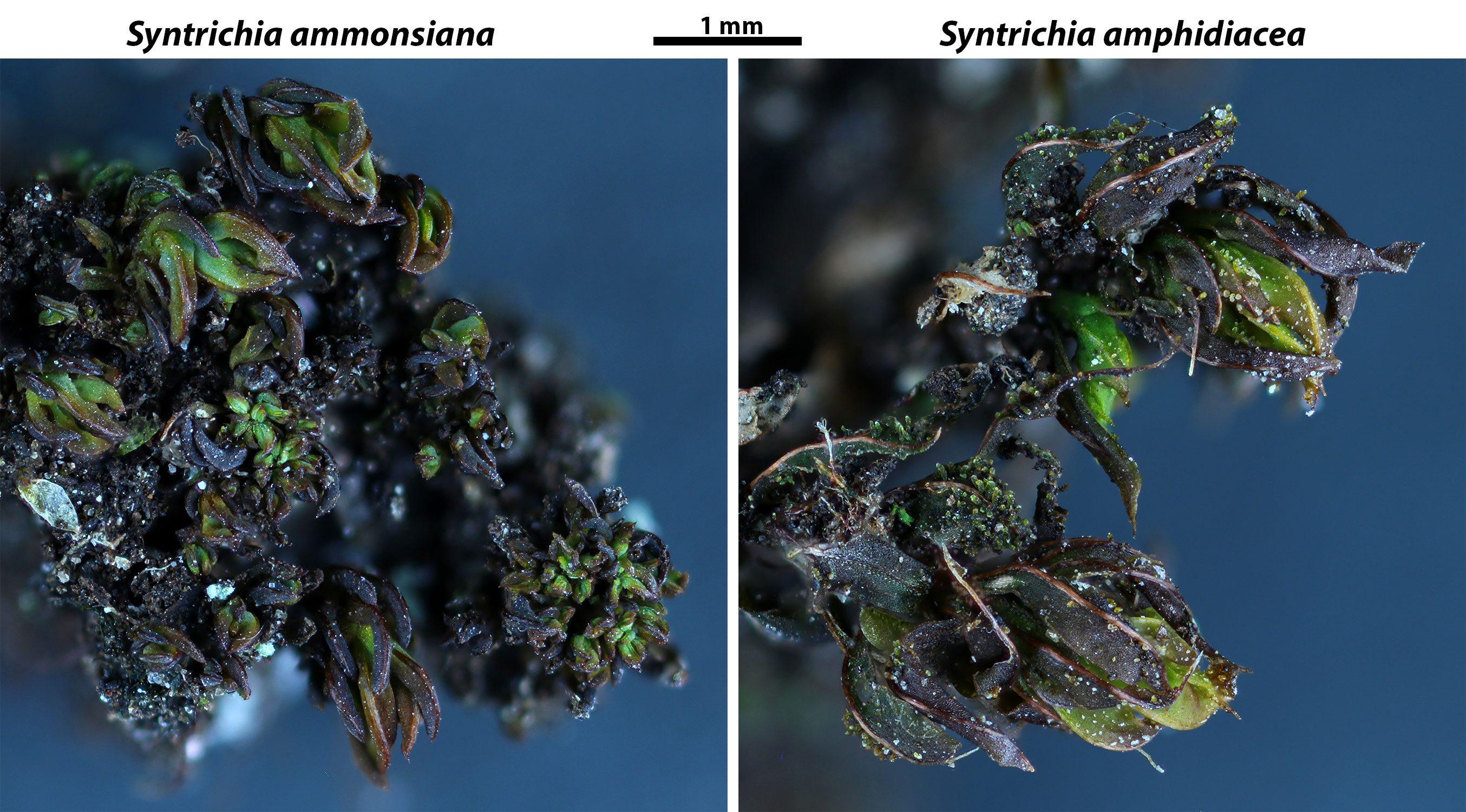Syntrichia amphidiacea (Müller Hal.) R. H. Zander
Family: Pottiaceae
Synonyms
Barbula amphidiacea Müller Hal.
Tortula amphidiacea (Müller Hal.) Brotherus
NatureServe Conservation Status
G3G5
Distribution
North America. U.S.A. (North Carolina, Tennessee, Virginia). Mexico. Central America. South America. Africa, Asia (Daniels et al. 2016, Mishler 2007).
Habitat
In mixed hardwood forests and wooded lawns of human habitation in mountainous terrain. Occurring on acidic and basic rocks and on mortar of stonework, on bark of standing hardwoods, rarely on logs or soil. Regionally, moderate elevations (1800-4300 ft).
Brief Description and Tips for Identification
The following was compiled from Crum and Anderson (1981) and Mishler (2007).
Loosely tufted on rock or bark, stems erect, 2 -15 (-25) mm tall. Dry plants green to brown; new growth green when moist. Leaves keeled, incurved, twisted, and only slightly contorted when dry, flat and wide-spreading when moist, narrowly or broadly spatulate. Leaves costate, costa ending a few cells before the apex or percurrent (extending to the apex), costa smooth at back. Leaf laminal cells pluripapillose. Leaf margins revolute in lower ½ - ¾, entire. Cylindrical propagula common on adaxial and especially abaxial leaf surfaces.
Dioicous. Sporophytes unknown in the Southern Appalachians.
Regionally, Syntrichia amphidiacea is similar to Syntrichia ammonsiana and Syntrichia papillosa, yet distinctions between these are obvious once characters are understood. S. ammonsiana stands apart in its leaflike propagula and leaf margins that are plane, not revolute. S. papillosa bears spherical to ovoid propagula on the adaxial surface of the costa, leaf cells are unipapillose on the lower surface, and leaves end in an awn.
Salient Features
- Propagula cylindrical, borne on the abaxial and adaxial leaf surfaces
- Leaf margins revolute in lower portion of leaf
- Costa ending a few cells before the leaf apex, or costa percurrent
- Costa smooth at back
- Leaves spatulate
References
Crum, H. A., and L. E. Anderson (1981). Mosses of Eastern North America (Vol. 1). Columbia University Press
Daniels, A. E. D., Sreebha, R., and Kariyappa, K. C. 2016. Syntrichia amphidiacea (Pottiaceae)—new to India from the Western Ghats. Lindbergia, 39, 35-38.
Mishler, B.D. 2007. Syntrichia. In: Flora of North America, North of Mexico 27: 618-627.
